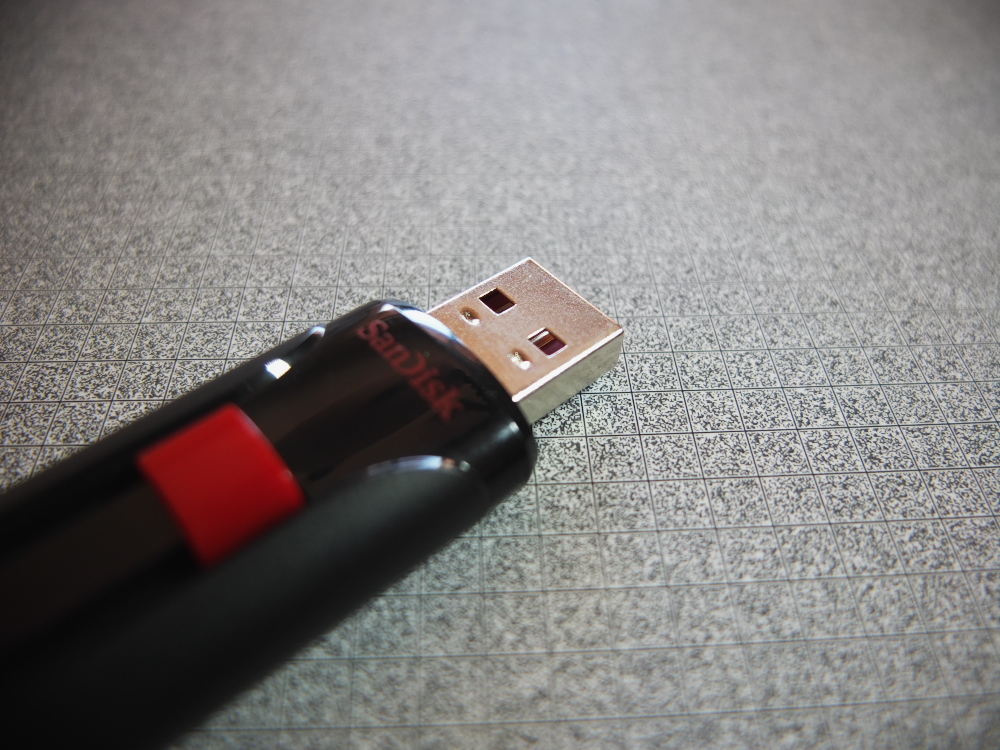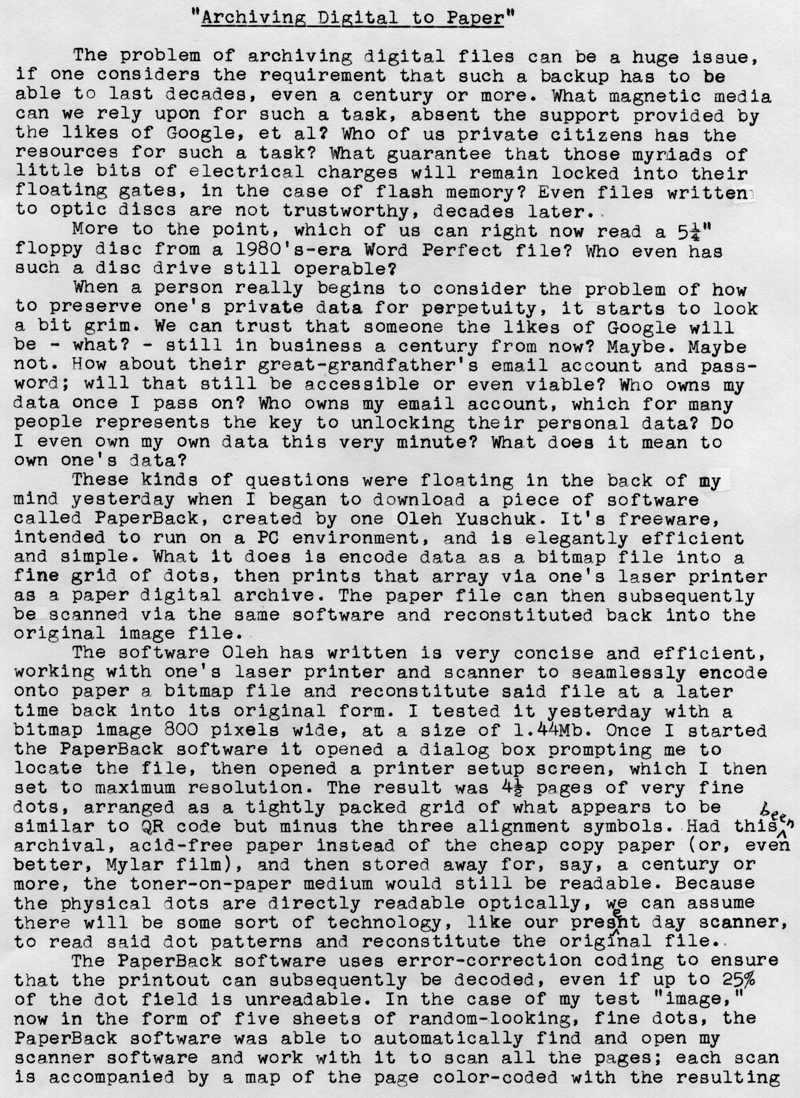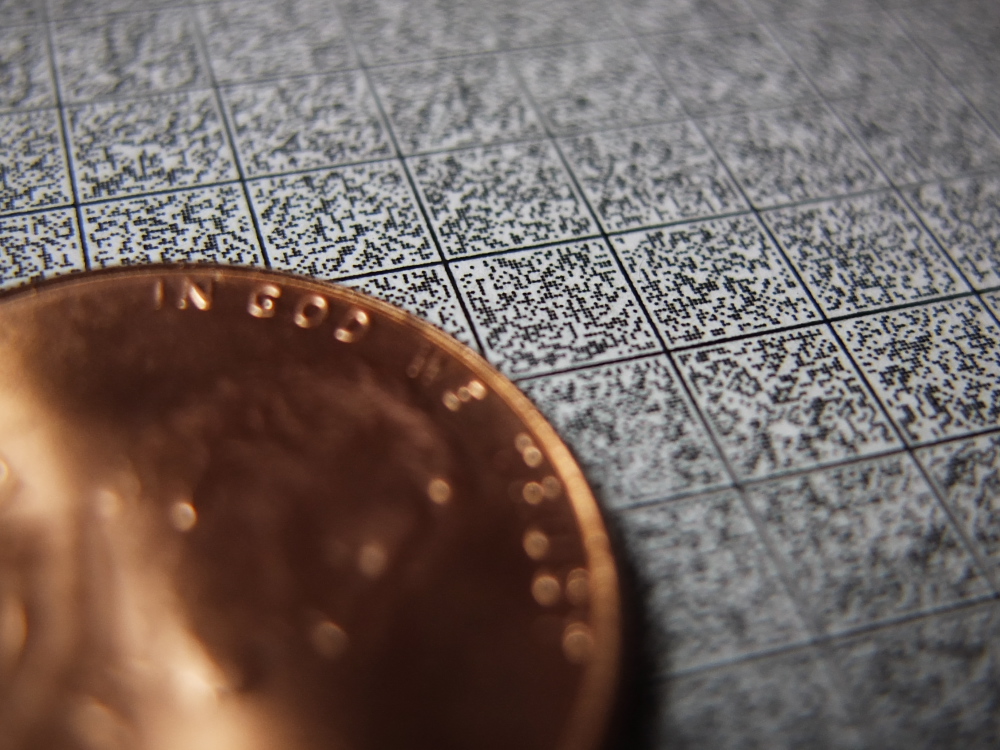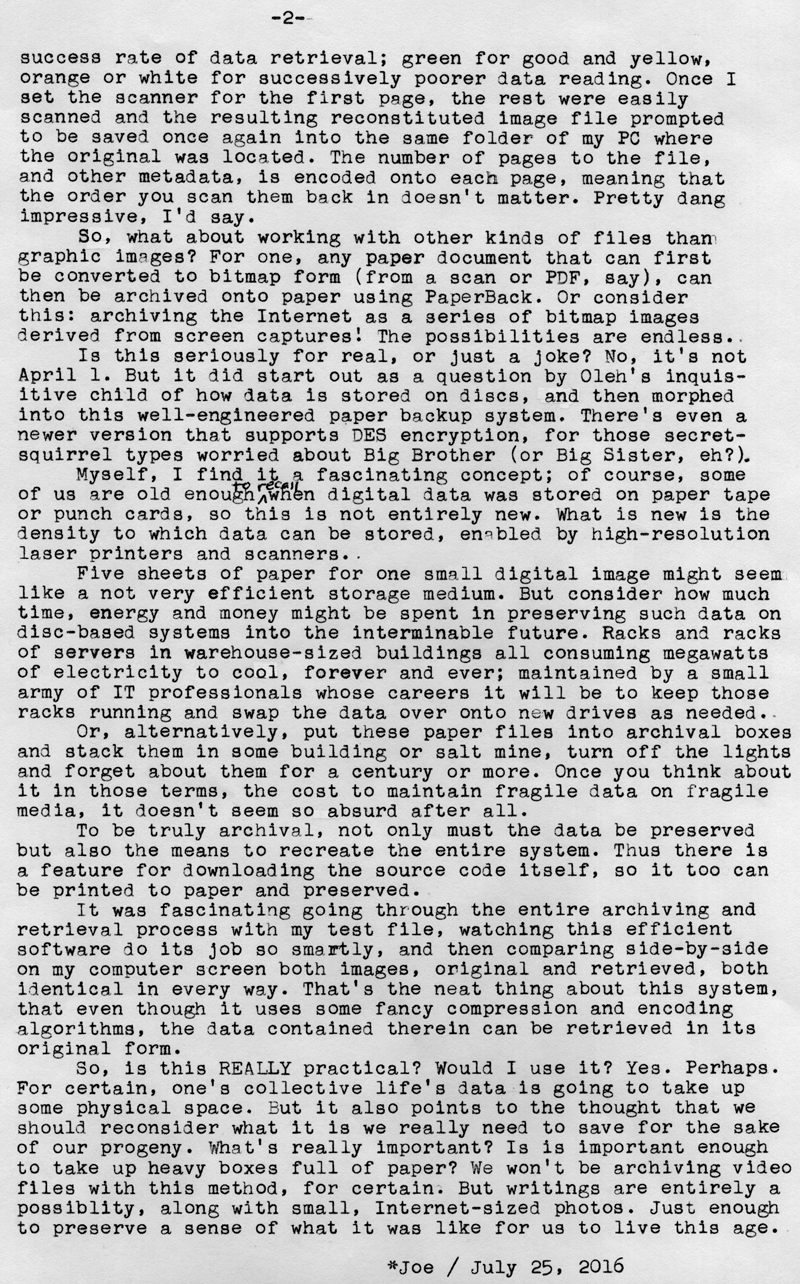Archiving Digital to Paper




Post-Script: I was surprised the software worked as well as it did, glitch-free and with such ease, finding my scanner and printer with no fuss, converting the file to and from paper with no hassle. Obviously well-engineered by someone who knows how to code. One sheet I used for the printout had one corner previously marked up by pencil (I obviously made no conscious attempt at providing archival-quality paper); during the scan, I could see that corner showed a bit of yellow and orange in the data map provided. Yet the error correction coding worked well enough to reconstitute the file in its entirety.
Yes, it sounds like a crazy idea, but it works! Which brings to mind the thought of what is it in my personal affects that's important enough to warrant this kind of backup? If all it does is serve to raise these kinds of questions, then it's a valuable tool.
Here's a link to the PaperBack website. And here's a link to an article about it.
Typecast via Corona Standard.
Labels: archiving, Corona Standard, memories, paper craft, PaperBack

4 Comments:
Super interesting. Thank you so much. What an ingenious way of archiving.
Sounds like we should not have abandoned microfiche. I have a small viewer that read films about 2" x 4" which contained maybe 20 pages. It was marketed for back packers to take maps, recipes,etc. on a long back pack trip. I've thought of reducing my DD214 to the size of a credit card to carry in my wallet. I would use my photocopier to reduce, maybe twice at 25% of the original. I plan to use vellum as the media.
Intriguing. As long as the PaperBack software will still exist in 100 years, or can be recreated from the printed code ... and if the operating systems of the future can still run the software.
Another alternative: print your text and images as actual text and images! The only software needed is the human eye and mind.
Richard, I was thinking the same thing, at least about text documents and spreadsheets.
As for photos, color inkjet prints are not as archival as silver gelatin; but with the bitmap data for a color image, it could be printed with future printing technology ... Assuming future tech will be more advanced than rocks and sticks.
Post a Comment
<< Home